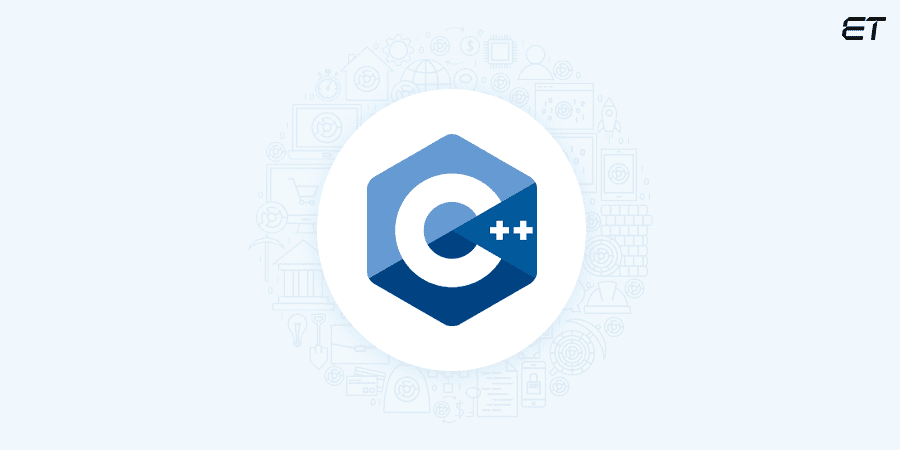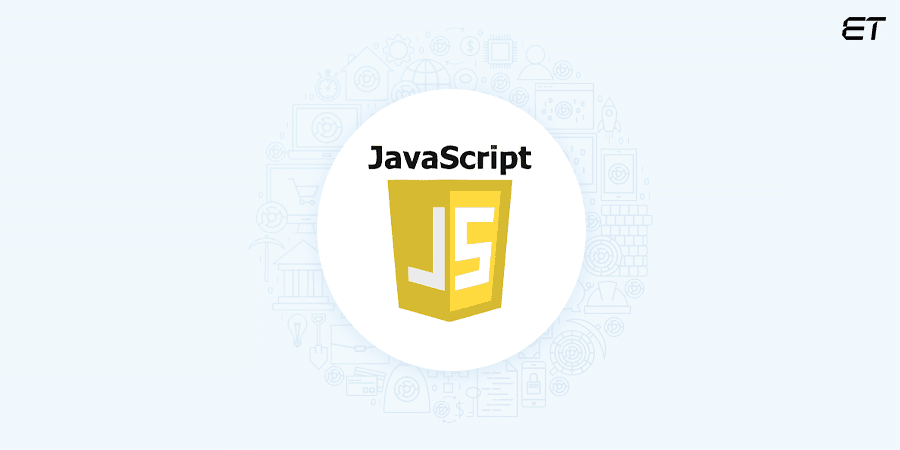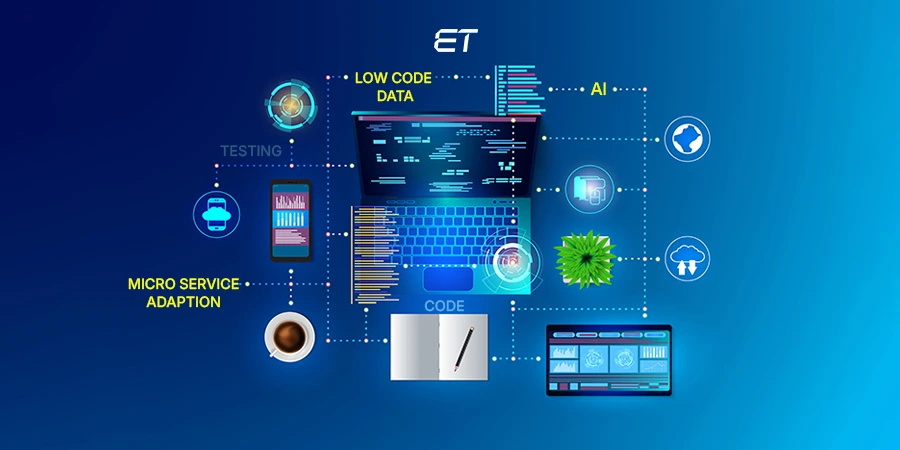
AI Programming Languages to Know: Choose the Best for Your Project
AI programming languages are not a futuristic idea anymore because it’s transforming industries and driving businesses to think outside the box. But as a decision maker for your company, you may be wondering what kind of AI programming languages can be advantageous for you and your application. Right?
Imagine your business as an iPhone 15 designed with special camera features and additional upgrades. But do you think this iPhone can run on an android’s framework? No, because the iPhone’s framework is different from android. Even though android’s framework is not outdated, it’s not compatible with that of an iPhone and will not support it. Similarly, using the wrong programming language for your projects is like using android’s framework with iPhone.
It won’t work and ultimately hold your business back. So, how do you ensure your AI initiatives are based on the right framework? The answer lies in choosing the correct AI programming language.
In this blog, we will explore the top AI programming languages that can power your business to success, their advantages, and real-life examples.
Let’s start!
Top 10 AI Programming Languages List
Without further delay, let’s start with the list of top AI programming languages for artificial intelligence and discuss it in detail for your better understanding.
1. Python
Python has been established as one of the top AI programming languages for artificial intelligence by programmers like you and us. Why? Because of its simplicity, extensive libraries, and robust community support. Python has become the top choice for developers working on AI projects.
Please scroll down to learn more about it in detail.

Why Python Dominates AI Programming Languages?
Simplicity and Readability
Python’s straightforward syntax and readability make it an ideal language for both beginners and experienced developers. It allows you to write clear and concise code as its design structure emphasizes code readability and simplicity. This is an essential aspect of AI programming, where complex algorithms and large datasets can quickly become unmanageable in less readable languages.
Extensive Libraries and Frameworks
Python consists of a rich ecosystem of libraries and frameworks explicitly tailored for AI and machine learning. These libraries simplify the development process by providing you with pre-built modules and functions, allowing you to focus on the core aspects of your projects rather than reinventing the wheel. Some of the libraries and frameworks are:
- TensorFlow: It provides you with a comprehensive ecosystem for building and deploying machine learning models.
- PyTorch: It is known for its dynamic computational graph and ease of use, making it a favorite choice for prototyping and experimenting with deep learning models.
- Scikit-learn: This library offers simple and efficient tools for data mining and analysis. It is built on NumPy, SciPy, and matplotlib and is particularly useful if you implement machine learning algorithms.
- Keras: It is a high-level neural network API written in Python. It can run on top of TensorFlow, CNTK, or Theano. Keras simplifies your process of building deep learning models.
Strong Community Support
One of the most notable reasons for Python being one of the best AI programming languages and machine learning is its extensive community support. This community is active, contributing to a variety in terms of resources, tutorials, forums, etc., to ask for assistance from people with different expertise and also give back to them as they have given to you. Therefore, this paves way for ongoing development and creativity within the python universe.
Flexibility and Integration
Python is highly flexible and easily integrated with other languages and technologies. It supports various programming paradigms, including procedural, object-oriented, and functional programming, making it versatile enough to handle different aspects of AI development. Additionally, Python can seamlessly interface with other programming languages such as C, C++, and Java, allowing your developers to optimize performance-critical parts of your applications.
Advantages of Python
- Python’s simple syntax and extensive libraries reduce the amount of code you need to perform complex tasks, leading to faster development cycles.
- Its rich set of libraries and tools simplifies the implementation of AI algorithms and models.
- Python is a cross-platform language. Code written in Python can run on various operating systems, such as Windows, macOS, and Linux.
- It excels in handling and processing large datasets.
Examples of Python in AI: Google’s TensorFlow, Facebook’s PyTorch, IBM Watson, Tesla’s Autopilot, Netflix, etc.

Discover top companies that provide AI development services.
2. R
R is a one of the AI programming languages that is solely meant for statistical computing and visuals. It has turned out to be the main tool for statisticians, data scientists and researchers who need analytical capabilities as well as visualizing capabilities.

Why is R Ideal for Statistical Analysis?
Designed for Statistics and Data Analysis
R is uniquely suited for statistical analysis and data visualization because of its syntax and functions that are tailored to perform complex statistical computations with ease. It offers a wide range of statistical and graphical techniques. These include linear and nonlinear modeling, time-series analysis, classification, clustering, and more.
Extensive Package Ecosystem
One of R’s greatest strengths is its comprehensive package ecosystem. The Comprehensive R Archive Network (CRAN) hosts over 15,000 packages, providing you with tools for almost every statistical and data visualization need. These packages offer you pre-built functionality that accelerates your application’s development process. Like,
dplyrfor data manipulationggplot2for data visualizationcaretfor machine learning
Powerful Data Visualization
R excels in data visualization, allowing you to create high-quality, customizable plots and graphs. The ggplot2 package, based on the Grammar of Graphics, is particularly notable for its ability to create complex and aesthetically pleasing visualizations. These visual tools are crucial for interpreting and presenting your data insights effectively.
Data Handling and Transformation
R is optimized for data handling and transformation, providing you with efficient data management capabilities. With packages like data.table and tidyr, R assists you in handling large datasets and performing intricate data wrangling tasks, ensuring that your data is clean and ready for analysis.
Advantages of R
- R supports various statistical tests and models, making it one of the top AI programming languages for heavy statistical analysis.
- R’s extensive libraries and tools cater to virtually every data analysis and visualization aspect.
- It is freely available and continuously improved by the community of users and developers making it up-to-date with the latest statistical methods and techniques.
- It easily integrates with other AI programming languages and technologies. It can call functions from C, C++, and Fortran, allowing you to optimize performance-critical sections of your code.
- It supports reproducible research through tools like RMarkdown and the knitr package, which allows you to combine code, output, and narrative in a single document.
Examples of R in AI and Data Science: IBM Watson Analytics, Google BigQuery ML, Genomics Research, Financial Analytics, Healthcare Analytics, etc.
3. Java
Java is among one of the best AI programming languages that is widely used and has survived throughout history. This programming language is known for being portable, scalable, and robust. It is therefore considered staple at an enterprise-level application like those involving AI.

Java’s Strength in AI
Portability and Cross-Platform Compatibility
Java applications are compiled into bytecode, which can run on any device equipped with a Java Virtual Machine (JVM). This “write once, run anywhere” capability ensures that your Java applications are portable and can be deployed across various platforms without any modification. This is particularly beneficial for your enterprise if the systems run on diverse hardware and operating systems.
Scalability and Performance
Java is designed to be highly scalable, making it an excellent choice for your large-scale AI applications. Its multithreading capabilities allow you to efficiently execute complex tasks, such as processing large datasets or running simultaneous AI algorithms. Just-In-Time (JIT) compiler, which optimizes bytecode execution at runtime, further enhances its performance.
Strong Integration Capabilities
Java integrates seamlessly with your existing systems and technologies, making it a one of the versatile choice for top AI programming languages. It supports various APIs and libraries that you can integrate with databases, web services, and other applications. This compatibility ensures that AI solutions developed in Java can easily be incorporated into the broader IT infrastructure.
Comprehensive Libraries and Frameworks
Java offers you a rich ecosystem of libraries and frameworks that support AI and machine learning, which include:
- Deeplearning4j
- Weka
- Java-ML
Advantages of Java
- Java’s design prioritizes your application’s performance and reliability. Its memory management, garbage collection, and multithreading capabilities can handle demanding workloads and deliver you consistent results.
- It has built-in security features. These provide you with a secure runtime environment, supporting access control, authentication, and encryption communication protocols.
- It consists of extensive documentation and a large, active community of developers like just like other top AI programming languages.
- It is an object-oriented programming (OOP) model that promotes code reusability, modularity, and maintainability.
Examples of Java in AI: IBM Watson, Twitter’s Real-Time Analytics, Amazon Alexa, etc.

Did you know the difference between the two most popular languages? – Find out here – Rust vs Python
4. Lisp
Lisp is one of the oldest AI programming languages. It is a powerful and unique tool for symbolic reasoning, rapid prototyping, and AI applications.

Why is Lisp Significant in AI?
Symbolic Processing and Flexibility
When it comes to symbolic processing, Lisp is especially effective, aiding you with several tasks in AI including natural language processing, automated reasoning, and knowledge representation. You also have the option of producing and changing dynamic code with this language’s adaptability at your disposal. Hence, it is possible to try out different concepts and methods without any delays.
Code as Data (Homoiconicity)
Lisp is homoiconicity, which means that the code and data share the same structure. This allows AI programming languages like Lisp programs to manipulate their own code as data, facilitating the development of powerful macro systems. These macros enable the creation of domain-specific languages and can significantly reduce your code complexity.
Dynamic Typing and Interactive Development
Lisp’s dynamic typing and interactive development environment make it ideal for rapid prototyping and iterative application development. You can test and modify the application’s code in real-time, which accelerates the development process and helps you quickly identify and fix issues.
Garbage Collection
Lisp is one of the first AI programming languages to implement automatic garbage collection. This feature manages memory allocation and reclamation, reduces the risk of your memory leaks, and improves the reliability of your AI applications.
Advantages of Lisp
- Lisp is a powerful tool for your application’s rapid prototyping.
- Its macro system allows you to extend the language by creating custom syntactic constructs.
- It excels in symbolic computation, assisting you with many AI tasks such as theorem proving, symbolic mathematics, and logic programming.
- Its syntax and semantics provide a high level of expressiveness, allowing you to write concise code.
Examples of Lisp in AI: SHRDLU, MACSYMA, DART, AI Research and Development, Emacs, etc.
5. C++
C++ is one of the best AI programming languages, known for its speed and usefulness, thus it is utilized primarily in AI apps that demand real-time processing as well as heavy-duty processes. It was developed as an extension of the C programming language, and it blends the authority of low-level memory control with advanced object-oriented concepts.

Why is C++ Significant in AI?
Performance and Efficiency
C++ is known for speed and efficiency. It has the capability to directly control hardware and memory, making it possible to optimize AI programs for both speed and resource utilization. This is especially important when it comes to AI projects that need to process information in real-time, such as driverless cars or robots with regard to which decisions must be made very fast.
Low-Level Memory Manipulation
C++ provides you with direct control over memory allocation and deallocation, enabling you to optimize system resource use. This is essential if you’re building high-performance AI applications that need to process large datasets or perform complex calculations quickly.
Object-Oriented Programming (OOP)
C++ supports object-oriented programming, which helps you organize complex AI algorithms and systems into modular, reusable code. OOP principles such as encapsulation and inheritance allow you to build scalable and maintainable AI applications.
Rich Standard Library
C++ provides you with a rich standard library with numerous functions for data manipulation and input/output operations. This simplifies your development process and enables you to focus on implementing AI algorithms.
Cross-Platform Compatibility
Top AI programming languages like Python, C++ is a cross-platform language that allows your application to be compiled and run on various operating systems, such as Windows, macOS, and Linux.
Advantages of C++
- It is designed for high performance and low latency, which makes it ideal for your AI applications, requiring real-time processing and quick response times.
- It offers you manual memory management, allowing you to optimize memory usage and prevent issues such as memory leaks and fragmentation.
- It allows you to optimize your AI applications according to specific hardware configurations needed.
- It gives you access to many libraries and frameworks that support AI and ML development, such as OpenCV, TensorFlow C++ API, and MLpack.
Examples of C++ in AI: Autonomous vehicles, High-Frequency Trading, Robotics, Gaming AI, Computer Vision, etc.
6. JavaScript
JavaScript is an extraordinary and one of the best machine learning AI programming languages that quite effectively conveys concepts in many fields. Any AI task or design of a website can be accomplished using this dynamic programming language. And because of Node.js, it can run on both the client side and the server side.

Why is JavaScript Significant in AI?
Ubiquity and Versatility
JavaScript is one of the most widely used AI programming languages. Its ubiquity in web development means that many of you are already familiar with it, which lowers the barrier to entry for using JavaScript in AI projects. It can run on virtually any platform that supports a web browser, making it highly versatile for your use.
Real-Time Web Applications Creation
JavaScript is great for developing interactive and real-time web applications. This allows the development of AI applications needing real-time data processing and interaction for example; chat bots, recommendation engines and interactive data visualizations. For instance TensorFlow.js allows running machine learning models right in your web browser with instant response and interaction.
Client-Side and Server-Side Development
The arrival of Node.js has seen the evolution of JavaScript from being just a client-side language to now being a server side as well. Currently, it is possible to write in Java Script for frontend and backend development. This minimizes your AI application development process as well as ease the incorporation of AI on all levels instantly.
Rich Libraries and Frameworks
JavaScript has a rich ecosystem of libraries and frameworks that facilitate AI development. Some of them include:
- TensorFlow.js is a JavaScript library for training and deploying ML models in the browser and Node.js.
- Brain.js is a neural network providing a simple API for creating and training neural networks.
- Synaptic is a lightweight neural network library that is flexible and easy to use.
Advantages of JavaScript
- JavaScript’s syntax is straightforward and easily accessible, irrespective of your experience level.
- It integrates seamlessly with HTML, CSS, and other web technologies, making it ideal for you to develop interactive web applications.
- Its asynchronous nature and event-driven architecture enable you to process data in real time.
- It is capable of running on any device with a web browser.
Examples of JavaScript in AI: Chatbots, Interactive Data Visualizations, Natural Language Processing, etc.

Learn about the top AI trend dominating the market trend in 2024 now. Enterprise AI Trends Overview For You to read!
7. Swift
Swift is known for its speed and safety in application development for iOS and macOS and is developed by Apple. In recent years, Swift has emerged as a compelling option for best programming language for AI and machine learning projects due to its clean syntax, modern language features, and growing support for AI development through libraries like TensorFlow Swift.
Why is Swift Becoming Popular for AI Programming?
Simplicity and Safety
Swift is designed to be easy to read and write, offering a clean and concise syntax that makes code easier for you to understand and maintain. This simplicity makes Swift an ideal choice among top AI programming languages for beginners looking to explore more. Additionally, Swift’s strong type system and error handling capabilities ensure safer code by catching bugs early in the development process, which is crucial in AI projects where errors can lead to significant inaccuracies.
Seamless Integration with Python Libraries
Swift can seamlessly integrate with Python, one of the most popular AI programming languages, thanks to Swift for TensorFlow. This interoperability allows you to leverage Python’s robust AI libraries and frameworks directly in Swift, giving you the best of both worlds. You can use Swift to handle complex computations while still tapping into Python’s AI programming tools.
Optimized Performance
As a compiled language, Swift offers high performance and speed, which are critical when you’re dealing with data-heavy AI applications. It eliminates many of the runtime issues found in interpreted languages, providing you a smoother, more efficient development experience. This speed is particularly advantageous when you’re training machine learning models or processing large datasets.
Strong Support from Apple Ecosystem
Being a language developed and backed by Apple, Swift enjoys strong support and a growing ecosystem. If you’re working within the Apple ecosystem, using Swift for AI projects allows you for easy integration with iOS and macOS apps, enabling the development of apps that leverage AI capabilities seamlessly.
Advantages of Swift
- Its clean syntax and robust error handling make AI code more maintainable.
- It has fast execution speeds due to its compiled nature.
- It strongly supports Python libraries and frameworks through Swift for TensorFlow.
- It is an excellent choice if you’re developing AI-driven applications within the Apple ecosystem.
Examples of Swift in AI: Leveraging Swift for TensorFlow in iOS apps, Core ML for machine learning in Apple devices, and integrating AI models into iOS and macOS applications.
8. Prolog
Prolog stands out as one of the unique AI programming languages a unique AI programming language that has been a favorite among many researchers and developers who are focused on symbolic reasoning, natural language processing, and expert systems. Its logical paradigm sets it apart from more conventional languages, allowing you to explore AI development in a new and innovative way. Read on to explore what makes Prolog essential for AI development.
Why Prolog is Essential for AI Programming?
Logical Paradigm and Reasoning
Prolog operates on a logical paradigm, unlike traditional imperative or object-oriented languages. This means that instead of defining the steps to solve a problem, you define the relationships and let the Prolog engine figure out the solution. This approach is particularly beneficial in AI programming languages applications that require symbolic reasoning, knowledge representation, and decision-making.
Efficient Pattern Matching and Backtracking
Prolog excels in pattern matching and has a built-in backtracking mechanism, making it ideal for AI algorithms that involve search problems, pathfinding, and decision trees. This capability simplifies the coding of algorithms that need to explore multiple possibilities, such as in game development or natural language processing.
Domain-Specific Applications
Prolog is highly suited for domains where logic and rules are central to solving problems. It’s often used in developing expert systems, theorem proving, and chatbots, where the ability to represent knowledge and reason about it is crucial. Its syntax allows you to write complex algorithms in a more human-readable form.
Advantages of Prolog
- It is ideal for logic-based AI applications due to its declarative nature.
- It has Powerful pattern matching and backtracking capabilities.
- It simplifies the implementation of complex search algorithms.
- It is suitable for developing expert systems, NLP applications, and automated reasoning.
Examples of Prolog in AI: Expert systems like MYCIN, natural language processing tools, and AI-powered chatbots like OpenAI.
9. Julia
In recent times, Julia is rapidly gaining traction among AI programming languages for its high-performance capabilities and ease of use. It is designed for numerical and scientific computing, and is becoming a preferred choice for AI and machine learning projects that require handling large datasets and performing intensive computations.
Why is Julia Gaining Popularity Among AI Programming Languages?
High Performance and Speed
Julia is known for its speed, thanks to its Just-In-Time (JIT) compilation using LLVM, which allows it to approach the performance of languages like C and Fortran. This high performance makes Julia an excellent choice for your AI applications that involve heavy numerical computations, such as deep learning and data science.
Rich Ecosystem of AI Libraries
Julia has a growing ecosystem of libraries and tools specifically designed for AI and machine learning, such as Flux.jl, MLJ.jl, and Knet.jl. These libraries provide you with powerful tools to build, train, and deploy AI models efficiently, making it easier for you to work on complex AI projects without reinventing the wheel.
Easy to Learn and Use
Julia’s syntax is intuitive and easy to learn, combining the simplicity of Python with the performance of lower-level languages. This makes it accessible for you if you’re a beginner while still being powerful enough for experts. The language also supports interactive computing and easy visualization, which is beneficial when you’re working with AI models and datasets.
Advantages of Julia
- It combines the speed of low-level languages with the ease of use of high-level languages.
- It strongly supports AI and machine learning libraries, like Flux.jl and MLJ.jl.
- It is ideal for scientific computing and handling large-scale data processing tasks.
- It is highly suitable for deep learning, reinforcement learning, and other AI applications that require intensive computation.
Examples of Julia in AI: Deep learning frameworks like Flux.jl and MLJ.jl, data science applications, and AI research projects that require high-performance numerical computing.
Which AI Programming Languages to Choose?

As a key decision-maker, you must consider several aspects to make your project successful. Selecting incorrect or insufficient AI programming languages can have an adverse impact on its success. Therefore, consider your project’s scale, team expertise, and integration needs while selecting AI programming languages.
- The usability and wide range of libraries of Python makes it one of the great AI programming languages for making fast and huge AI applications.
- Enterprise AI applications should run on Java because it is scalable and well- integrated with other systems.
- If your AI application deals with real time high resource consuming tasks, then use C++ because of its effectiveness and speed.
- It is a good decision to use JavaScript for websites based AI applications because it is universal and can process data instantly.
Last but not least, choosing right AI programming languages is essential to driving innovation and maintaining a competitive edge. Align your choice with your business needs and what suits your business best. Need help? Don’t worry! Schedule an appointment today and learn what’s best for you from our experts!
Frequently Asked Questions
1. What programming language is best for AI?
Python is widely regarded as the best among the list of top AI programming languages due to its simplicity, readability, and extensive libraries. However, the best depends on your project requirements.
2. How do I choose the right AI programming language?
Consider your project’s specific requirements, the expertise of your team, and the long-term maintenance needs.
3. Can JavaScript be used for AI development?
Yes, JavaScript can be used for AI development, especially for web-based applications using libraries like TensorFlow.js.
4. What are the advantages of using Python for AI?
Python offers extensive libraries, ease of use, strong community support, and is ideal for machine learning, deep learning, and NLP.
5. Is AI coded in Python?
Yes, AI is often coded in Python because of its simplicity, extensive libraries, and strong community support which makes it ideal for AI development.
6. Which language is better for AI, Python or Java?
Python is generally considered better for AI due to its simpler syntax, rich libraries, and tools specifically designed for AI and machine learning. Java, however, is also used for AI but is better suited for large-scale applications.
7. Which programming language is used for artificial intelligence applications and expert systems?
Python is the go-to language for AI applications and expert systems due to its simplicity, extensive libraries (like TensorFlow and PyTorch), and strong community support. For symbolic reasoning and logic-based systems, Prolog and LISP are also preferred. Java and R are great for scalable, real-time AI solutions and statistical analysis, respectively. The choice depends on your project’s complexity and performance needs.
8. How to learn AI programming for beginners?
Start with Python—it’s easy to learn and widely used in AI. Focus on AI libraries like NumPy, Pandas, and TensorFlow. Take online courses, build simple projects (e.g., chatbots or recommendation systems), and join coding communities to gain hands-on experience. Consistent practice and small wins will help you master AI programming step by step.





